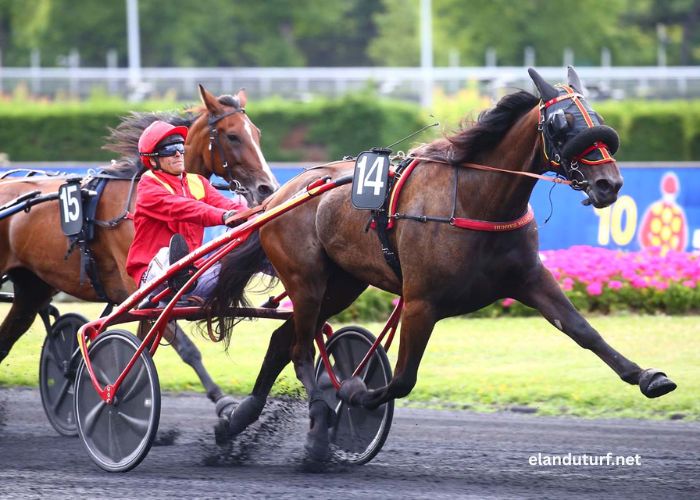The world of horse racing is filled with excitement and unpredictability, where every second counts, and each decision can determine the outcome of a race. One of the key elements in horse racing strategy is the concept of Passage Obligé Minarik. This term refers to a mandatory path or strategy that a jockey must adopt, especially in races with specific requirements or regulations.
In horse racing, where timing, positioning, and decision-making play a crucial role, understanding concepts like Passage Obligé Minarik is essential for both jockeys and bettors. It offers a glimpse into the complex dynamics of race strategy and how a simple rule can have a significant impact on the race’s outcome. With this concept in mind, it’s clear why Passage Obligé Minarik is not only a valuable term for insiders but also a key to understanding the competitive nature of racing.
What Is Passage Obligé Minarik in Horse Racing?
Passage Obligé Minarik refers to a mandatory path or strategy that jockeys must follow during a race. This rule ensures that jockeys do not take shortcuts or avoid particular parts of the track that might be crucial for fair competition. In some cases, the term is used to describe an imposed strategy that dictates how a jockey should navigate specific race conditions.
In essence, Passage Obligé Minarik adds an element of strategy and regulation to the race. It forces the jockey to adhere to a predetermined course or path, which can often make or break the outcome of a race. This strategy ensures that the race remains competitive and fair, preventing any unfair advantage a jockey or horse might gain by straying from the designated path.
Understanding Passage Obligé Minarik is vital for jockeys because it shapes their race tactics. In many races, the path dictated by this rule can influence how the jockey manages the horse’s speed, positioning, and energy. For bettors, knowing how the Passage Obligé Minarik rule impacts the race can be crucial when making predictions, as it adds a layer of complexity to the competition.
How Does Passage Obligé Minarik Affect Race Outcomes?
The influence of Passage Obligé Minarik on race outcomes cannot be underestimated. Jockeys who are able to navigate these required paths with skill and precision often have a distinct advantage over those who struggle with the imposed strategy. This can lead to more exciting and unpredictable race outcomes, where the jockey’s ability to manage their position and maintain the required path is key to their success.
In races where Passage Obligé Minarik is a factor, jockeys must be aware of the layout of the track and the specific sections they are required to pass through. Failure to follow this strategy can result in penalties or even disqualification. Thus, understanding the intricacies of this rule is critical for both jockeys and their teams. They must work together to optimize their horse’s performance while remaining within the confines of Passage Obligé Minarik.
For bettors, Passage Obligé Minarik can sometimes be a deciding factor in predicting which horse will emerge victorious. If a jockey has a reputation for mastering complex racing strategies, such as those dictated by Passage Obligé Minarik, they might be more likely to succeed in races that require this specific approach. As a result, bettors who are familiar with these dynamics can better assess the race and make informed predictions.
Why Is Passage Obligé Minarik Important for Jockeys?
For jockeys, Passage Obligé Minarik is a fundamental part of their training and race-day preparation. Mastering the intricacies of the required path or strategy gives them a competitive edge over their peers. The ability to understand when and how to follow the Passage Obligé Minarik can directly impact a horse’s performance and, ultimately, the race’s outcome.
Jockeys are trained to understand the full scope of Passage Obligé Minarik, including the subtle adjustments they must make to stay within the designated path. While the horse’s speed and stamina are essential, the jockey’s ability to strategically navigate these predetermined areas can often make the difference between a win and a loss. It is not just about speed, but about how well the jockey adheres to the rules of Passage Obligé Minarik.
The importance of Passage Obligé Minarik also extends beyond individual races. For a jockey to build a successful career, they must prove their ability to master various racing strategies, including Passage Obligé Minarik. The more proficient a jockey becomes at managing these requirements, the more competitive they are in the long run. A jockey’s skill in adhering to these strategies is one of the defining factors that can elevate them to the top tier of professional racing.
How Do Passage Obligé Minarik Rules Impact Race Strategy?
The Passage Obligé Minarik rules heavily influence the race strategies employed by both jockeys and trainers. Since this rule requires jockeys to follow a specific path or strategy, they must plan their moves carefully. The dynamics of the race change depending on the sections of the track that are dictated by Passage Obligé Minarik.
Jockeys often adjust their speed and positioning based on the areas of the track that are impacted by Passage Obligé Minarik. For example, if the rule specifies that a particular corner must be taken at a slower pace, the jockey must manage their horse’s energy levels in advance. This requires a keen understanding of the horse’s abilities and the timing of the race. These race strategies are essential for successfully navigating Passage Obligé Minarik.
Moreover, the race strategy shifts in races where Passage Obligé Minarik is enforced. Jockeys may need to position themselves differently on the track to ensure they adhere to the rules while still maintaining a competitive position. Understanding the course and being able to anticipate when and where the path will influence their racing tactics is critical. As such, Passage Obligé Minarik is not just a rule—it is a fundamental aspect of race-day strategy that can determine success.
How Can Bettors Use Passage Obligé Minarik to Improve Their Predictions?
For bettors, understanding how Passage Obligé Minarik plays a role in the race can provide valuable insight when making predictions. Knowing that a race requires adherence to specific path regulations means that bettors can consider the jockey’s ability to follow these strategies as a key factor. Horses with jockeys who excel at Passage Obligé Minarik may have an advantage in races where the rule is particularly challenging.
Bettors can improve their predictions by studying the performance of jockeys who are known for their expertise in handling Passage Obligé Minarik races. If a jockey has a proven track record of succeeding in races with specific course requirements, bettors may want to consider placing their wagers on horses ridden by that jockey. Additionally, observing how different jockeys approach races with these regulations can give bettors a better understanding of who is most likely to succeed.
By considering Passage Obligé Minarik as a factor in their betting strategy, bettors can make more informed decisions and increase their chances of success. Paying attention to which horses and jockeys perform best under these specific rules can make all the difference in races that involve this mandatory strategy.
How Do Passage Obligé Minarik Rules Vary Across Different Races?
The rules surrounding Passage Obligé Minarik can vary depending on the specific race and location. While some races may have very strict regulations requiring jockeys to follow specific paths, others may have more relaxed requirements. Understanding these nuances is essential for both jockeys and bettors, as the rules can influence the race dynamics significantly.
In some cases, Passage Obligé Minarik rules may dictate the positions of horses during key sections of the race, while in others, they may focus on specific track features that must be adhered to. The varying nature of these rules means that both jockeys and bettors must be prepared for different strategies depending on the race in question.
Jockeys who are versatile and skilled in adapting to different Passage Obligé Minarik rules will have an edge over those who are less experienced with these regulations. Bettors who take the time to study the specific requirements of each race can improve their predictions, leading to more successful betting strategies.
Conclusion
In conclusion, Passage Obligé Minarik plays a significant role in the world of horse racing, influencing race strategies, jockeys’ decisions, and ultimately the outcome of the race. For bettors, understanding the intricacies of this rule is crucial for making informed predictions. Whether it’s learning how a jockey handles these mandatory paths or studying how the rule impacts race strategy, the concept of Passage Obligé Minarik provides valuable insights into the racing world. By incorporating this knowledge into their approach, both jockeys and bettors can enhance their performance and success in the world of horse racing.




